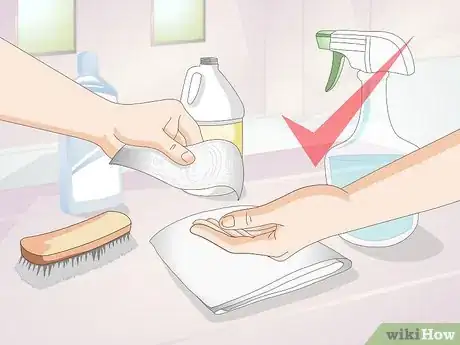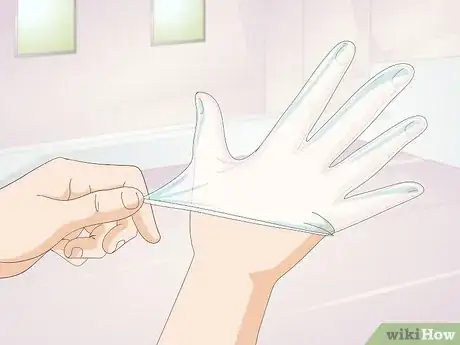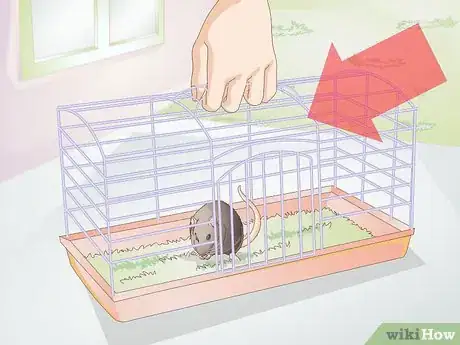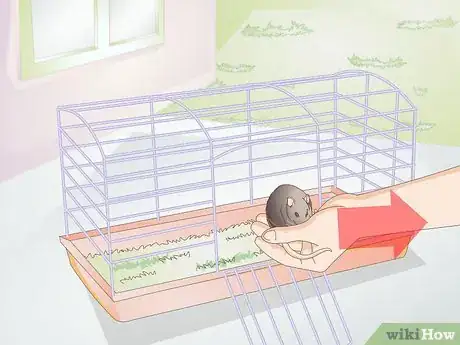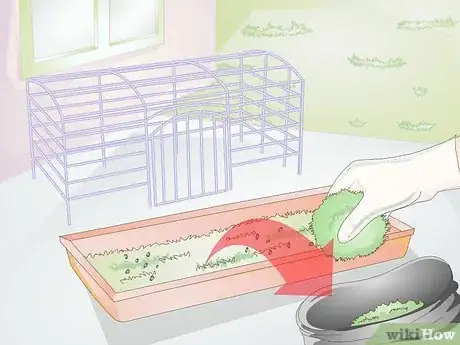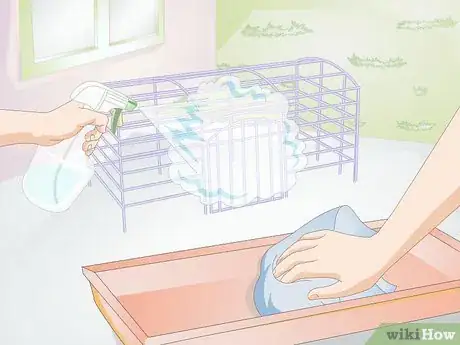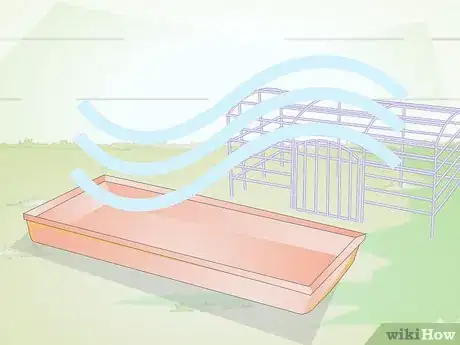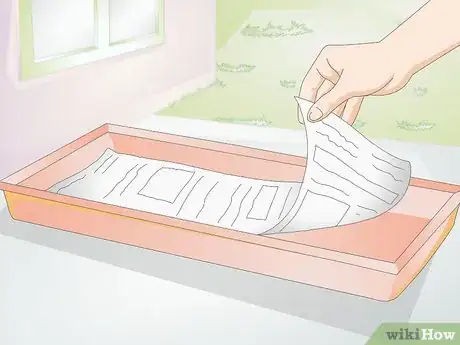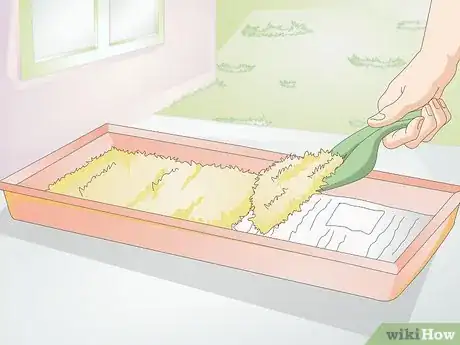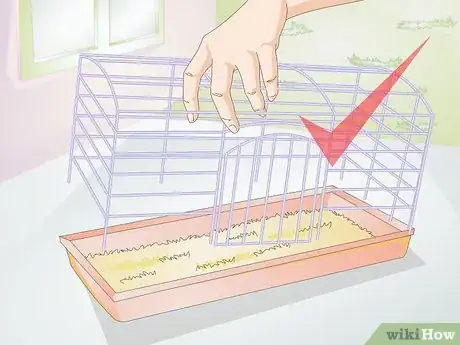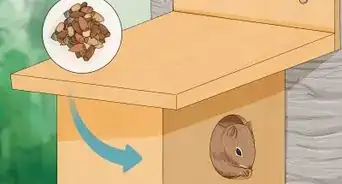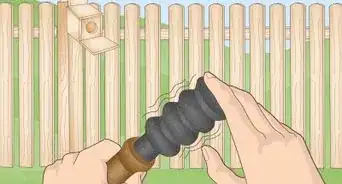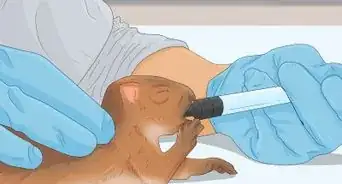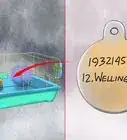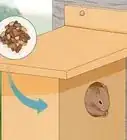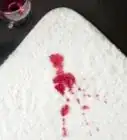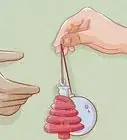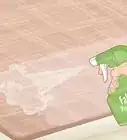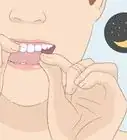This article was co-authored by Pippa Elliott, MRCVS. Dr. Elliott, BVMS, MRCVS is a veterinarian with over 30 years of experience in veterinary surgery and companion animal practice. She graduated from the University of Glasgow in 1987 with a degree in veterinary medicine and surgery. She has worked at the same animal clinic in her hometown for over 20 years.
This article has been viewed 22,066 times.
Cleaning of your pet's cage helps to keep your pet healthy and safe from bacterial or fungal infections. It also ensures that your pet's cage is not unpleasant for them to live in and that the cage does not stink up your home.[1] In order to keep your pet's cage nice and clean, you should give it a detailed and thorough cleaning on a regular basis, preferably at least once a week.[2]
Steps
Preparing to Clean the Cage
-
1Buy suitable cleaning products. To ensure the cage is properly cleaned, buy cage cleaner from a pet store or use regular dish washing soap. The cleaner is available in wipes or a spray bottle. You will also need paper towels and a something to put the used bedding and paper towels in, such as a plastic bag.
- Be sure that you are using a cleaner that is non-toxic to your pet. Your cage cleaner should say "non-toxic" on the label and be made to clean animal cages specifically.
- For the safety of your animal, be sure to follow the directions for use and strength on the cleaner.
-
2Get personal protective equipment. The waste of your pet may be toxic, so you should avoid contact with it. Wear disposable gloves and keep all cage contents off of your skin.Advertisement
-
3Place the cage in an area that can be easily cleaned. While this process can be easy and tidy, there is a chance of spilled bedding. Because of this, its important to do the cleaning somewhere that can be easily cleaned.
- If it's a nice day outside, consider taking the cage outside to do the cleaning. That way any spilled contents won't get your home dirty.
-
4Remove the animal from the cage. You need to take your pet out of it cage while you clean it. Put your pet somewhere safe during the cleaning process. You don't want to have to focus on keeping an eye on the pet while you are doing the dirty work of cleaning its cage.
- A cat's travel basket or cage is a good choice for a small animal. Just line it with newspaper to keep it clean while you clean your pet's cage.
- You can also get a small ball your rodent can run around in while you clean its cage.
Cleaning the Cage
-
1Remove old food, bedding, and animal waste. If the bottom of the cage is lined with newspaper below the bedding, you can simply roll up the newspaper, which will contain the bedding as well. This is the easiest, and cleanest, way to remove the bedding.
- You can compost any compostable materials, such as biodegradable bedding, newspaper, and the waste of herbivorous animal. However, if you are cleaning out carnivorous waste, put it in the garbage can.
-
2Clean all parts of the cage. If you have a cage that comes apart, take it apart. Spray each part of the cage and wipe thoroughly with a clean cloth or paper towel or wash it with soap and water.[3]
- If concerned about leaving cleaner on the cage, wipe with a cloth dampened with water to remove any traces.
- Clean any toys that are in the cage.
- Clean all food dishes with soap and water.
-
3Let the cage air out and dry. You should not immediately refill the cage if it is still damp. Give it time to dry completely so that you don't introduce the risk of mold in the cage.
- Remember to wash your hands after cleaning the cage and the area you cleaned the cage in.
Reassembling the Cage
-
1Line the cage with newspaper. Newspaper helps to reduce the cleaning each time and is easily composted. Put down several layers, enough so that the layer will hold up to liquid.
-
2Put new bedding in the cage. You do not need to put a very thick layer of bedding in the cage. In fact, you should be able to barely see the newspaper lining beneath the bedding.
- More bedding will not allow you to clean the cage less frequently. In fact, it increases the chance that your pet will be in contact with wet bedding, and in turn of getting an infection.
-
3Put the cage back together. Add fresh food and water. Check that any water teats are flowing easily. If you took the top off the cage, put it back on.
- Then you can let your pet back into his or her freshly-cleaned home!
Things You'll Need
- Cage cleaner
- Disposable gloves
- Bedding and newspaper
- Fresh food and water
References
About This Article
To clean a small pet cage, start by removing everything from the cage, including food and water bowls, toys, and bedding. Once the cage is empty, wash everything with hot water and soap. After you're done washing and rinsing the cage, allow it to dry thoroughly in the sun or in an airy room. When you’re ready to reassemble the cage, line it with newspaper, place new bedding on the bottom of the cage, and put the toys and dishes back in place. For more tips from our Veterinary co-author, including how to dispose of old bedding, keep reading!
